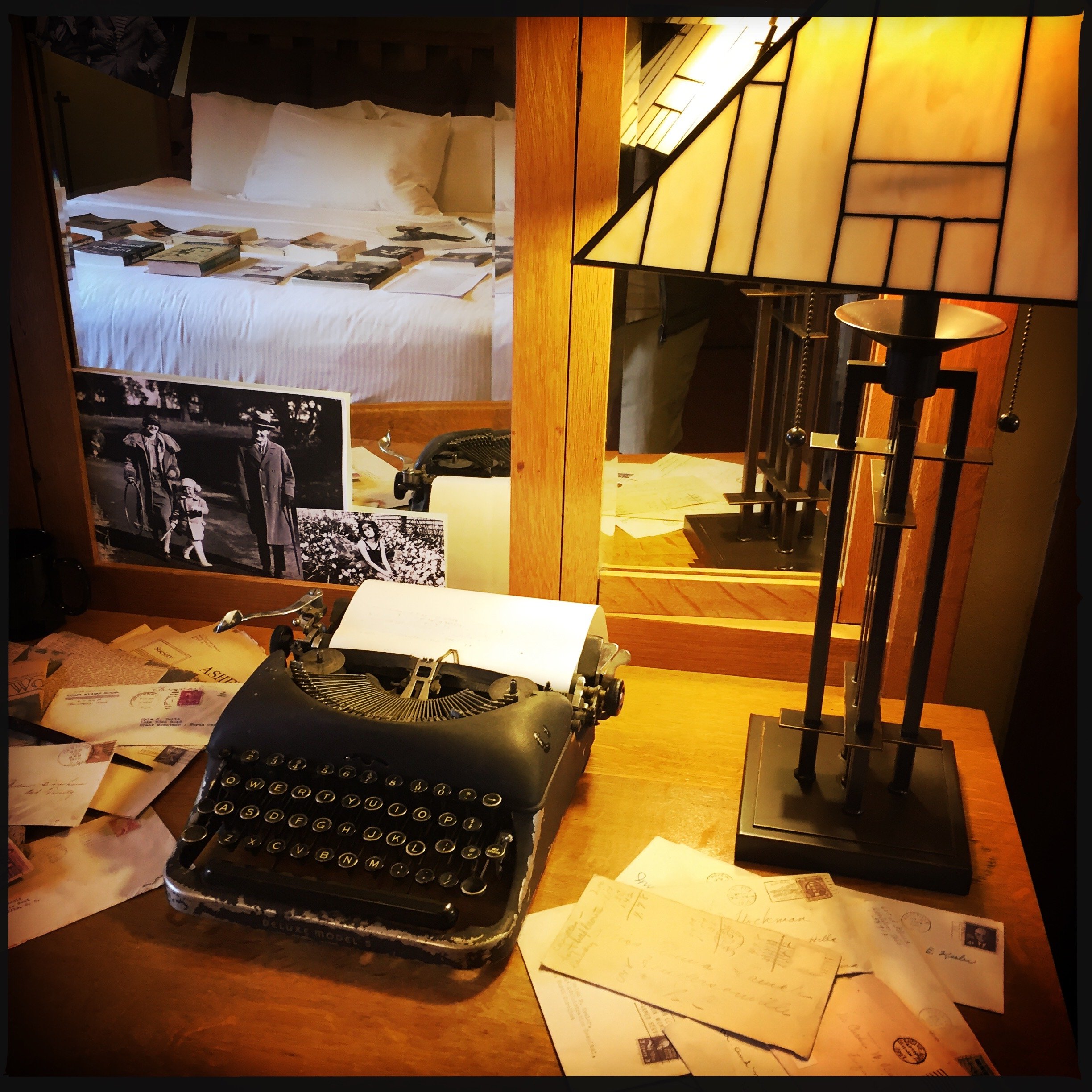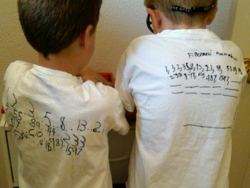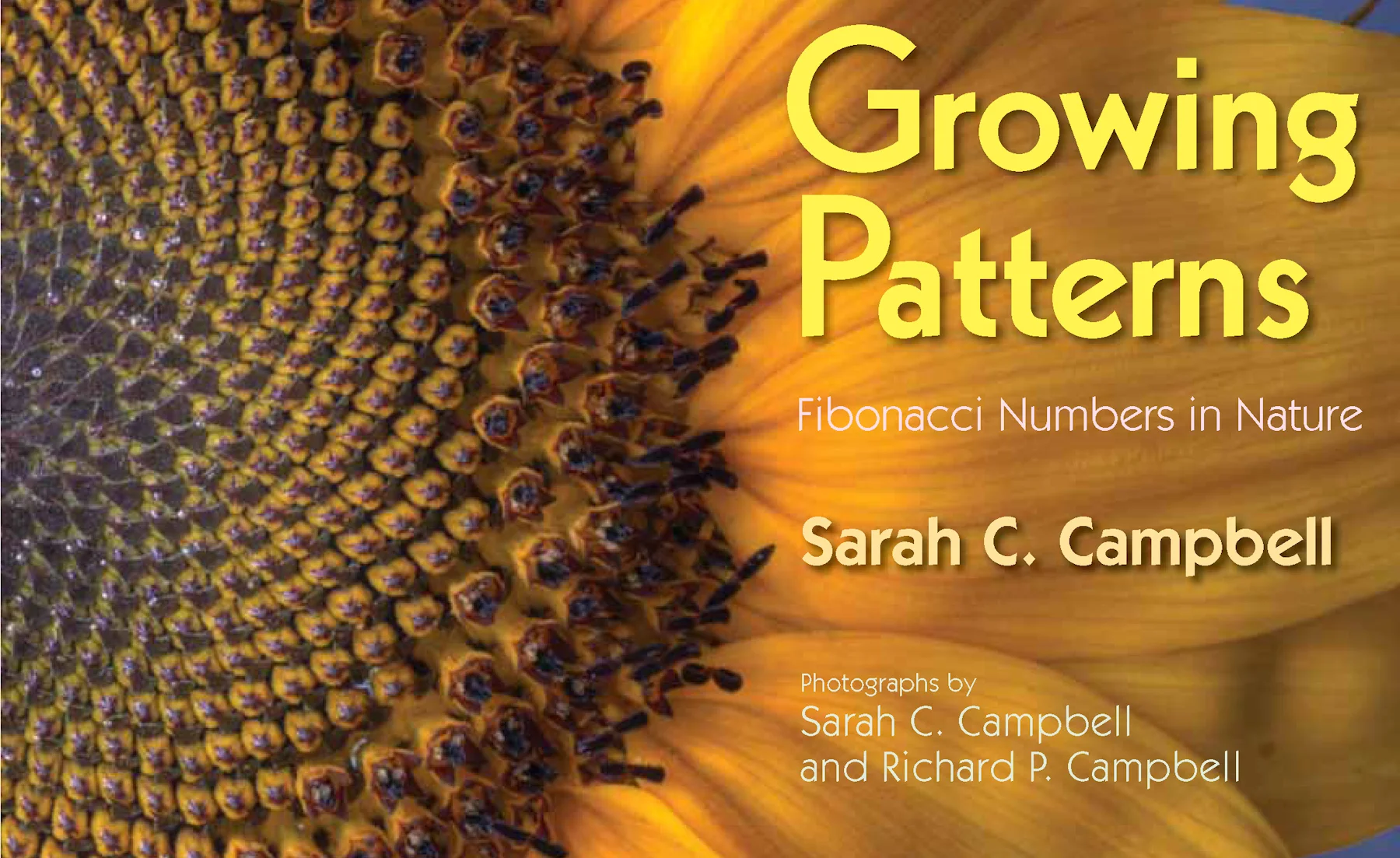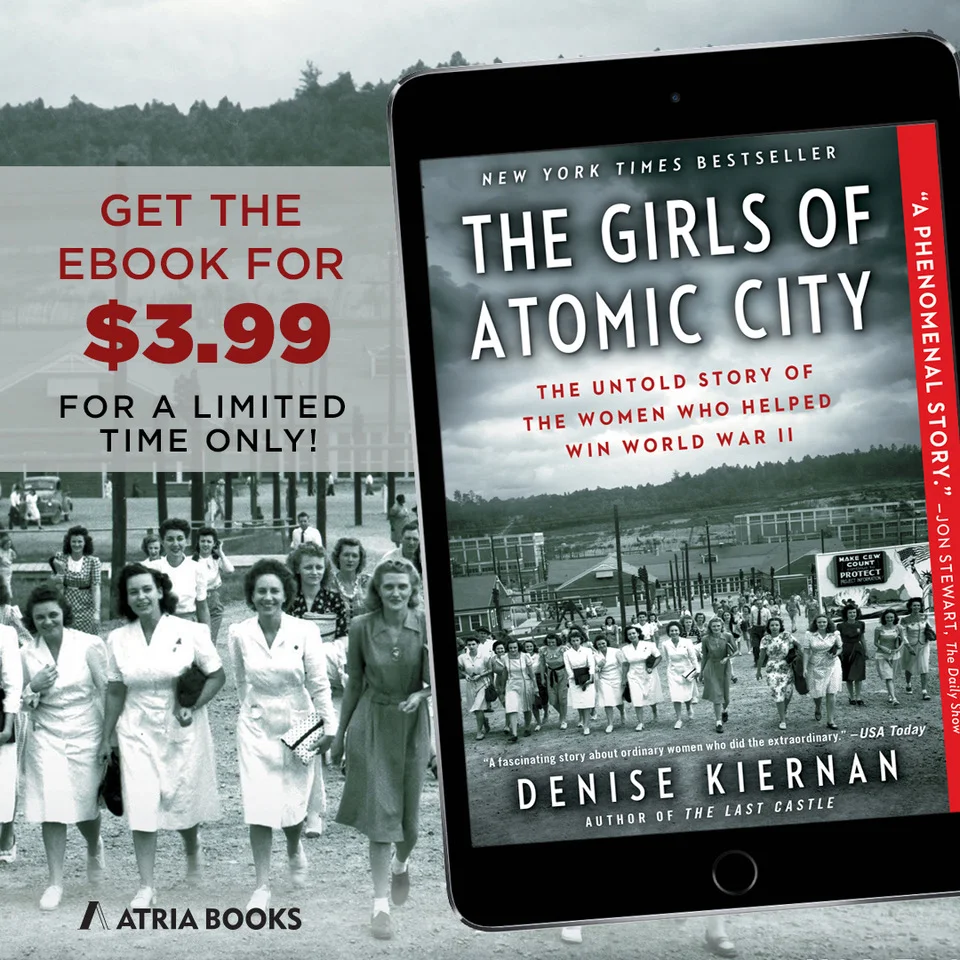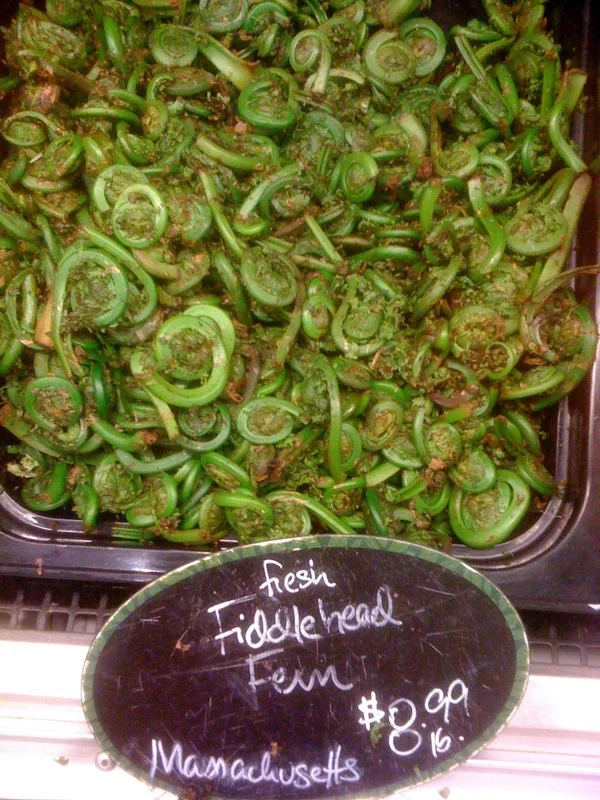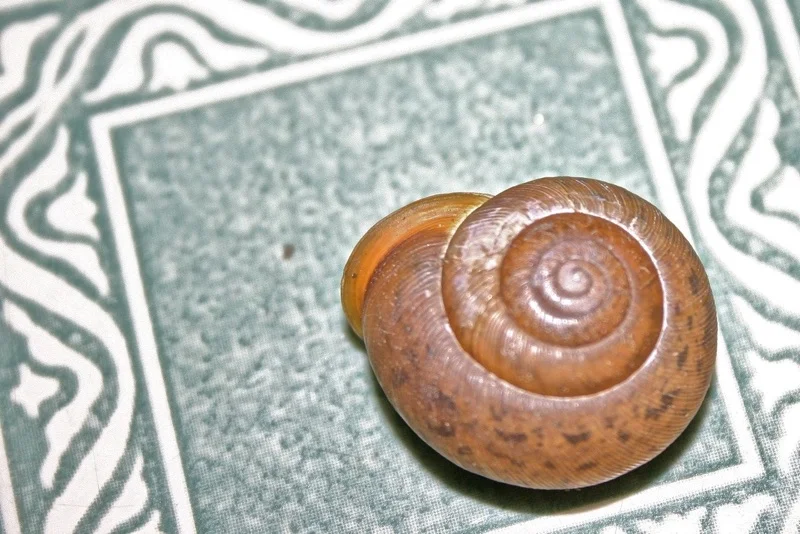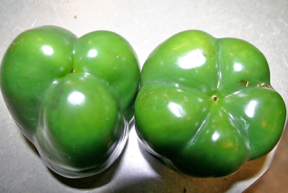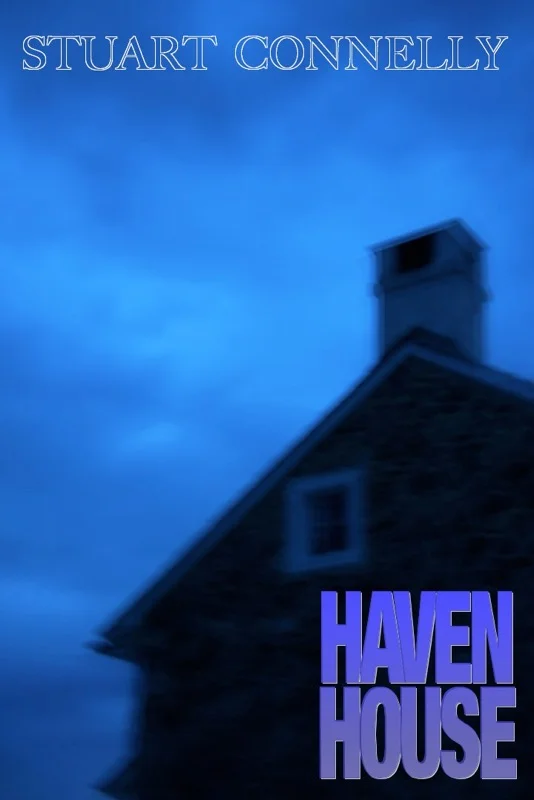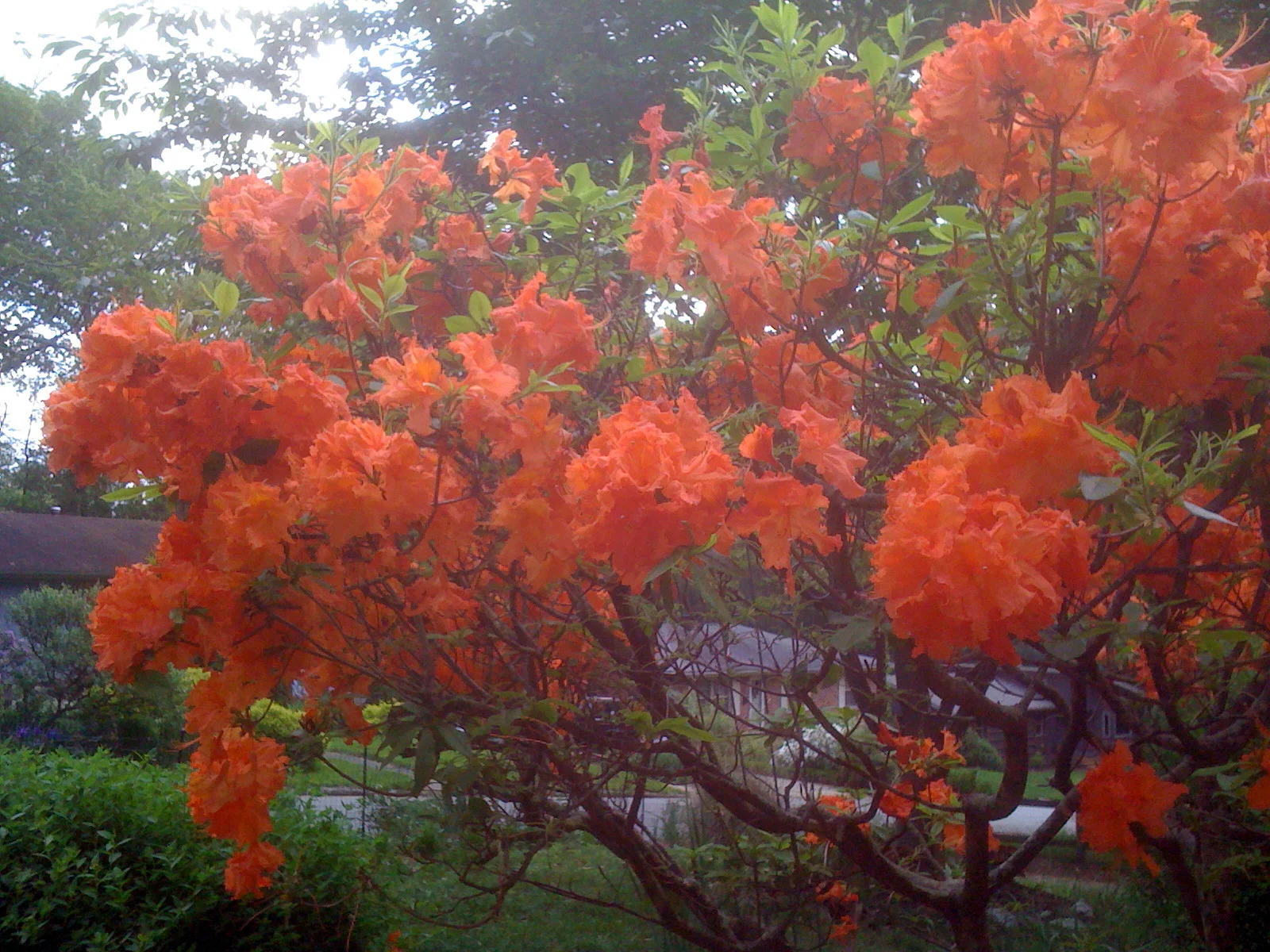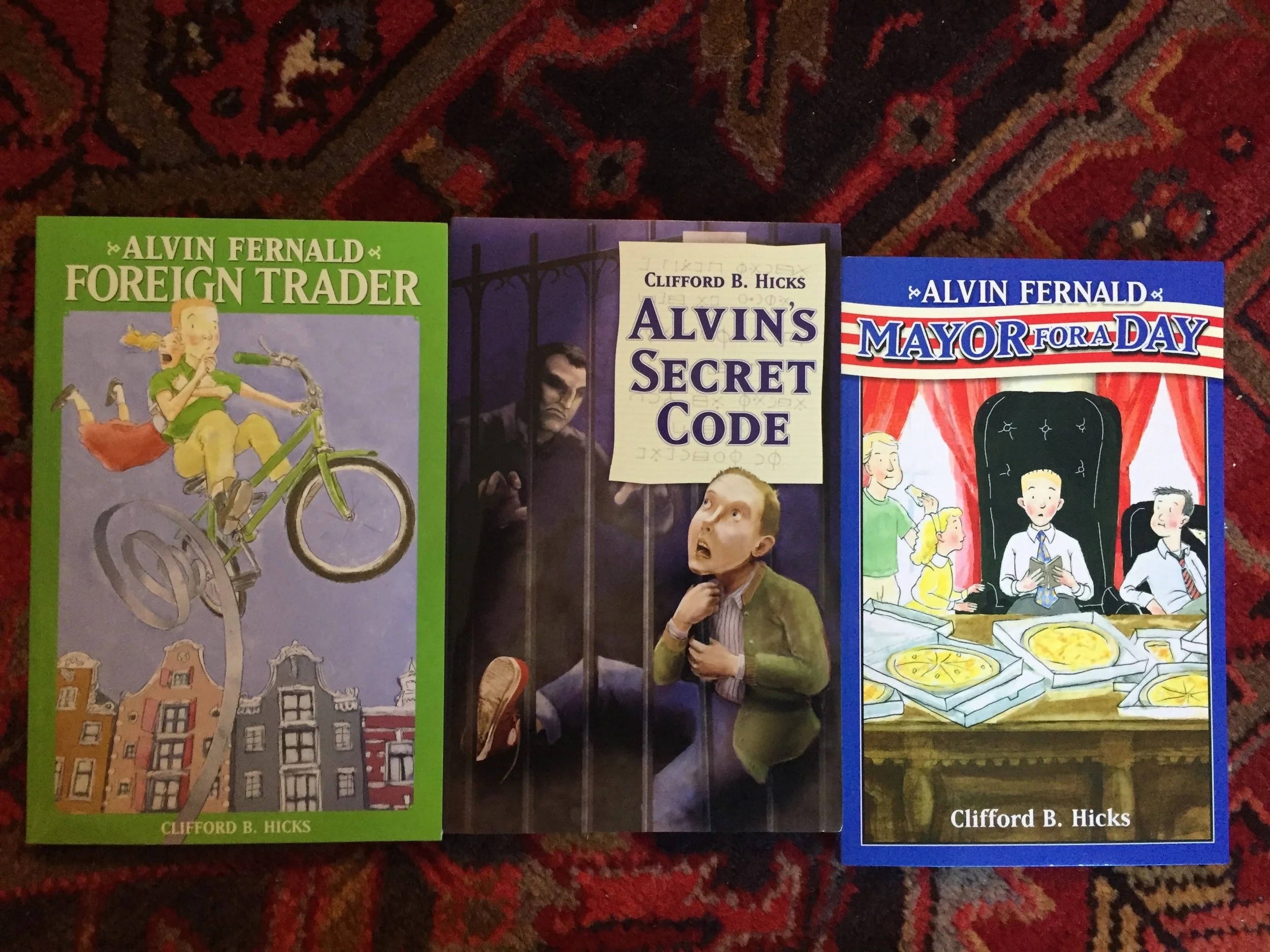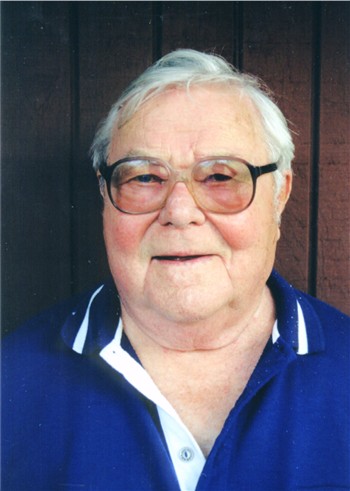These past few months, I’ve been reposting old material from my now defunct blog. This post dates back to April 2, 2010, to the week my book about Fibonacci first entered the world. The kids mentioned in the post are now in high school, but in this post they’re eternally under 10 years old.
I warn you: This blog post, the fifth stop in my virtual book tour for “Blockhead: The Life of Fibonacci,” ends in something of a rant. I can’t help myself. A few weeks ago, I sent advance copies of my Fibonacci book to my two brothers to share with their children, my niece and two nephews. My niece now apparently thinks I’m a hero.
As for my nephews, well, the photos here tell the story. In one, they’re looking for Fibonacci objects on a California beach. In the other, they’re wearing Fibonacci shirts they’ve made themselves, scrawling the Fibonacci Sequence on white tees with permanent marker. On top of that, my brother reports that the boys have a new favorite snack: Fibonacci apples. This consists of ordinary apples sliced side-to-side, rather than stem-to-stem, to reveal the five-pointed star in the center of the fruit.
If you have a pulse and read even one book as a kid, you probably see something of yourself in the behavior of these kids. I know I do. When you read a book as a kid, it opens worlds. Stimulation breeds exploration. Stimulation begets investigation. Stimulation fosters imagination.
That’s why I think it’s important for parents, teachers and librarians who share Blockhead with kids to help them make the next logical leap into the world of hands-on reality. I’m going to offer just a few tips here, but I’m working on a more comprehensive list that I’ll be presenting at the NCTM math teacher’s conference later this month. [2019 Update: If you’re a teacher, librarian or parent, and want a copy of these materials, please just write via my contact page, and I’ll send you the PDF I later created from these notes.]
Kids who learn about the Fibonacci Sequence for the first time naturally want to see if the incredible number pattern really holds up in the real world. They will want to inspect plants and animals for themselves to confirm that this natural mystery really is true. Here’s what you can do to help them:
Visit a garden this spring where they can inspect flowers first-hand and count the petals to see if they display Fibonacci numbers. Consider a trip to a botanic garden near you. If you don’t have one nearby, a trip to a florist will do. Buy a few dollars worth of different flowers and let them sort them according to Fibonacci numbers. If you can’t do this, consider using Sarah Campbell’s book Growing Patterns: Fibonacci Numbers in Nature. Sarah’s crystal-clear close-up photos are the perfect substitute for the real world. Seeing is believing.
Consider planting your own Fibonacci Garden. Let kids research which plants display Fibonacci numbers, and decide which you’ll start from seed, and which will be bought live and planted. As each plant blossoms, ask kids to make a record of the numbers they see, using either a camera or pencil and paper.
If they are entranced with spirals, help them to find examples of spirals in their new garden, at the supermarket, in the woods, or at the beach. If you can’t visit a beach, visit a shop that sells seashells and buy a bag and let the kids sort them for attributes. Visit a museum or rock shop to inspect fossils displaying spirals.
If they are intrigued with the man Fibonacci, help them to research his life and times. Look at pictures of the Leaning Tower of Pisa, investigate books on the Middle Ages, and try to find Pisa and the Algerian city of Bugia (now called “Bejaia”) in an atlas. Help them plan an imaginary trip through the Mediterranean following in the footsteps of Fibonacci.
Ask them to come up with their own number patterns and challenge their friends—or you—to crack the code. See how far they can extend the Fibonacci Sequence. (Keep lots of paper handy!)
A numeral such as 1, 2, or 3 are just symbols for a larger concept of a number. The Romans used letters to express numbers. But your kids can easily come up with their own numerals. Let them try.
Have them write Fibs—Fibonacci-inspired poetry—using the number pattern as a guide. your kids might enjoy the book by Gregory K., the man who invented Fibs: The 14 Fibs of Gregory K. Remember: writing a Fib is more fun than telling a fib.
Ask them to research the lives of other men and women in the sciences and consider writing and illustrating their own picture books using Blockhead as model. Be sure that they include an activity page at the back of their books, just as we did in Blockhead.
If they are older kids, create opportunities to have them share what they’ve learned with younger kids.
For goodness’ sake, slice them up some Fibonacci apples already!
I hope you get the idea that there is no end to explorations kids can make when they are inspired to explore math’s place in the natural world.
If you’re like me, the best books you ever read as a kid spurred you to take hands-on action—sometimes good, sometimes bad—in the real world. Charlotte’s Web fostered my fascination with arachnids and the swine that love them. The book made farms seem interesting to a suburban kid. When I got older, the memory of the book’s clear, gorgeous language inspired me to seek out White’s other work. From The Mixed-Up Files of Mrs. Basil E. Frankweiler forced a family expedition to the world’s greatest museum. Charlie and the Chocolate Factory inspired a somewhat messy foray into chocolate-making in my patient mother’s kitchen.
Every kid is different, and you have know idea where their enjoyment of a book will lead them. If read a book about Bob and Joe Switzer, maybe they’ll want to invent their own paints, or consider a career as a chemist. If they’d read a book about Maria Sibylla Merian, maybe they’d close the book, get off the couch, wander outside to draw pictures of bugs, and embark upon a lifelong fascination with entomology.
And don’t get me wrong. I have no problem with fantasy, either. Ask me to drive with you now through that Phantom Tollbooth, press any button in the Great Glass Elevator, or to fly with you at once to Narnia, and I’ll abandon my desk now, chair spinning. For me, these books will never lead to a dead-end cul de sac. Instead, they are screaming, eight-lane highways bound for imagination. Each time you travel down them, no matter how old you are, the road gets wider, broader, longer, richer. They take you to new and familiar places, every time.
But I freaking digress, and should stop now.
Thank you for allowing me and the old Tuscan bonehead into your life. If the old man were with us now, I’m sure he would doff his floppy cap, bow like the practiced courtier that he was, and utter a “Grazie!” as well.
Join me soon for a peek into the art of Blockhead.
Until then, keep it real.
Yes, I am trying to post here more often. Thank you for noticing. If you want to sign up for my newsletter and claim your free ebook, go here. Thanks!

